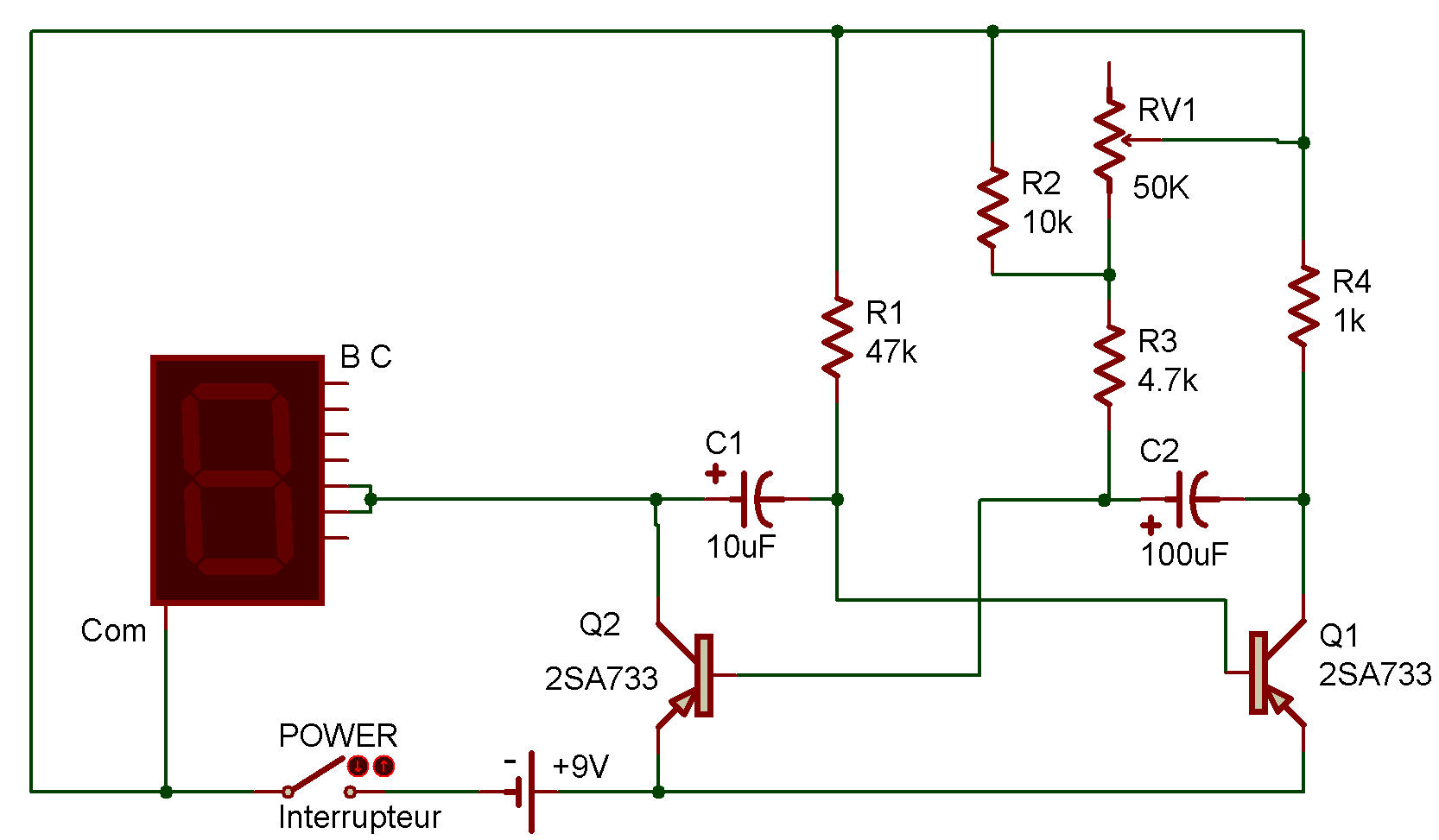
Transistor Flip-Flop Circuit

What is a flip-flop? It is a kind of circuit that changes back and forth between two states (on and off) at certain intervals. It flips into one state, then flops to another, and so on.
This flip-flop uses two transistors, two capacitors, and four resistors to turn the LED on and off. Each transistor is always in the opposite state of the other, when transistor Q1 is on, transistor Q2 is off, when Q2 is on, Q1 is off.
This change from on to off (and off to on) happens very fast (in microseconds). Adjust the control and note its effect on the flashing rate of the LED.
Look at the schematic to see how this circuit works. Remember that a transistor turns on when voltage is applied to its base. The two PNP transistors bases are connected to the negative side of the batteries through resistors.
You might think that both transistors would always be on, but there are two capacitors connected to the bases that help cause the flip-flop action.
To explain the circuit, let's assume that transistor Q1 is off. Transistor Q2 is on because the 100μF capacitor is charging and discharging through its base. The 4.7K resistor and the control keep transistor Q2 on after the 100μF capacitor has discharged.
Now, the 10μF capacitor has received a charge and is discharging through the 47K resistor, the battery, and the Q2. (Remember, when transistor Q2 is on, this means current can flow through its collector to its emitter.)
Transistor Q1 remains off as long as the charge on the 10μF capacitor is high enough. When the charge drops to a certain point, the negative voltage from the 47K resistor turns on transistor Q1.
And, when Q1 turns on, the 100μF quickly starts charging and lets transistor Q2 turn off. With Q2 off, its collector voltage rises toward the 9V of the battery supply and the LED turns off.
Through the fast charging of the 10μF, the Q1 turns fully on. This flip occurs very quickly. After a while the 100μF discharges through the Q2 transformer, and the circuit flops back to the original state to begin the above action again.
We have used this sort of circuit in several previous projects. Look back and try to locate them.
